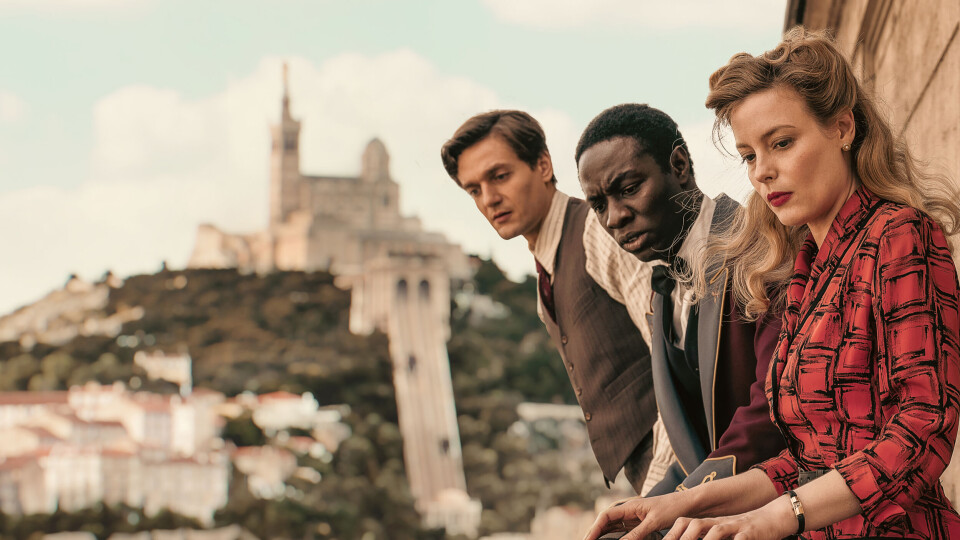-
Visitors to Normandy American Cemetery must soon book in advance
With more than one million visitors last year, the cemetery is one of the region’s most-visited D-Day sites
-
Price rises for Netflix in France
The Standard (with ads) and Premium packages are increasing by €24 a year
-
Photos: 94 chateaux open their doors to visitors in Dordogne
The fifth Chateaux en Fête festival offers a chance to look around many impressive properties that are usually private
Marseille was early ‘Resistance capital’ as new series shows
The Connexion speaks to a leading expert on wartime in the southern port city about what he thinks Netflix got right and wrong

The new Netflix war series Transatlantic has come in for both praise and criticism from the press and academics for its depiction of Marseille in 1940, a time that saw the rise of early Resistance movements.
Read more: Netflix tells of Americans in Marseille who saved thousands from Nazis
For Ouest-France, it “won us over” with its “distinguished costumes, elegant ambiance and detailed reconstruction of the period," while 20 Minutes found it “always exciting," mixing different genres “with brio."
Le Figaro and Le Monde, however, thought showing black characters from the colonies creating Resistance movements and drawing links with antiracism and anticolonialism reflects current politics more than the period.
While for Le Monde the aim "does not lack sincerity", Le Figaro objects to a lack of positive images of the white French.
Varian Fry
The show centres around the historical character of Varian Fry, an American journalist who in 1940-41 helped get thousands of vulnerable people, including Jews and ‘subversive’ artists and philosophers, such as Marc Chagall, Marcel Duchamp, Hannah Arendt, Max Ernst and André Breton, out of France.
The series has partly been hailed for helping boost the profile of Fry, who was not previously a household name.
Read more: Varian Fry: The American who was a ‘Schindler in France’
However, Jean-Marie Guillon, professor emeritus of modern history at Aix-Marseille University and an expert on the Resistance, is not a fan.
He told The Connexion that sticking points for him included giving a greater role to wealthy American Mary-Jayne Gold than is historically accurate (“she was remarkable but she said in her memoirs that her role was peripheral”); a “postcard” version of Marseille, which he said was dirty, poor and crowded; and people shown walking to the Pyrenees (400km).
He also criticised as "boxticking" a gay romance for Fry, who he said was married and not known to have relationships in Marseille.
Fry's son has, however, said he believes his father was a closeted gay man.
Prof Guillon was also not aware of black Africans from the French colonies involved in the early Resistance and “hardly any” from North Africa.
Marseille birthplace of Resistance
Two aspects the show got right were the fact that Marseille was arguably the place where the Resistance got under way, especially in the south, and that from 1940 the UK secret services worked closely with the early groups.
Prof Guillon said the work of Fry in 1940-41 can be seen as part of this.
“Even if the Resistance didn’t exist in 1940 – it had yet to be created, to be invented – Fry’s actions were part of what was going to become the Resistance. It was the Resistance before the Resistance.”
The British Intelligence Service (IS) got in touch with Fry and others in the area to get stranded British soldiers out of the country via Spain, as is shown in the series.
However, Prof Guillon said they were not held in the Camp des Milles prison camp but were under house arrest in a barracks in the city and were relatively free to come and go.
The IS also, from these early years, started working to set up intelligence systems within France, notably making contact with a socialist group in Marseille with which Daniel Bénédite, Fry’s French ‘right-hand man’, was associated.
In 1942, IS's successor the Special Operations Executive also worked with early groups, which, Prof Guillon said, made Marseille "the capital of the Resistance" before Lyon.
A key figure in this was Henri Freney, a French army captain who set up there in 1940 what is now considered the first organisation in the French ‘interior’ resistance, that is, la Résistance within France.
This is different from the Free French of Général de Gaulle, which was based in London from June 1940.
“His movement of national liberation later merged with another group that was very present in Marseille, Liberty – which printed a little newspaper in the city – to become, at the end of 1941, Combat, the main Resistance movement in the non-occupied zone.”
Marseille was also associated with the Communists, who played a key Resistance role, he said.
Future Resistance hero Jean Moulin, later based in Lyon, initially took refuge in Marseille’s Bouches-du-Rhone department where he had grown up, Prof Guillon said.
He came to the city to organise paperwork to leave France, as well as to inform himself about the early networks.
This helped him write the report he gave to de Gaulle, one of the first on the start of the Resistance in France, which led to de Gaulle designating him to go back [in 1942] and unify all these groups."
Related articles
Make sense of French television’s role in social and cultural life
Teacher uncovers wartime heroism to save Jews in France
























